
Review
Donkey Kong Country Returns HD review: fantastic new version of a true classic
by Cassie Mammone

Although Donkey Kong has been around just as long as Nintendo mascot Mario, the gorilla is overshadowed by the plumber. Yet his gaming history is unique and full of highlights.
The story of «Donkey Kong» is almost as old as Nintendo's history in the video game business. The gorilla began his career as an enemy of Mario, years before Bowser replaced him and took on this role permanently.
Nowadays, DK is a good mate of Mario. At least that's what his regular appearances in the numerous «Super Mario» spin-offs suggest. Apart from that, the gorilla has broken away from his former plumber rival and is the star of his own games.
Games: «Donkey Kong» (1981), «Donkey Kong Jr.» (1982), «Donkey Kong 3» (1983)
Before Nintendo became one of the best-known video game companies, it sold playing cards. When the Japanese company had already been in business for decades, it expanded and tried its hand at toys from the 1960s onwards. It is therefore only natural that Nintendo takes notice of the emerging electronic toys in the 1970s and gets involved itself. As a result, Nintendo's first video games for arcade machines were released in 1979 and 1980 with «Sheriff» and «Radar Scope».
If you've never heard of these two titles, it's no wonder. They flopped. The «Radar Scope» machines in particular are not selling. As a result, they are rotting away in warehouses and present Nintendo with a challenge: the company needs to develop a successful game to make up for the financial losses.
At this time, a young, inexperienced developer whose name is now recognised throughout the gaming world joins the company: Shigeru Miyamoto. With «Donkey Kong», he not only brings the company the success it needs, but also creates Mario, the most famous video game character of all time. To save his girlfriend Pauline, Mario has to jump up metal scaffolding in various levels while avoiding enemies and flames.
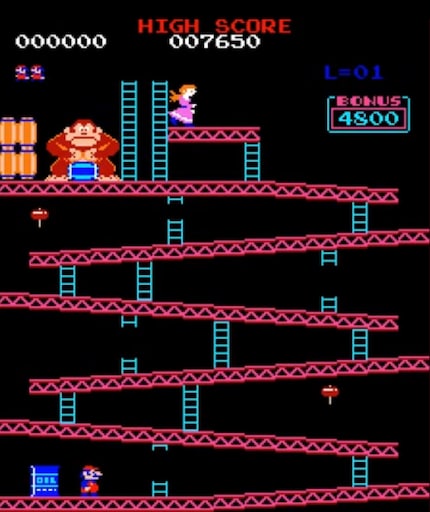
As the game's villain, the gorilla gets his name before the hero «Jumpman». Miyamoto searches for other words for the name «stubborn monkey». The choice finally fell on «Donkey», the English word for «donkey», and «Kong», a synonym for «monkey».
The success of «Donkey Kong» was followed by «Donkey Kong Jr.» and «Donkey Kong 3», two successors for the arcades. «Donkey Kong Jr.» plays similarly to part 1, but reverses the roles of heroes and villains. Now Mario is the kidnapper. The third part still looks like its predecessors, but plays differently. The platforming elements disappear and Mario suddenly has to shoot the evil monkey from below.

Games: «Donkey Kong Country» (1994), «Donkey Kong Country 2: Diddy's Kong Quest» (1995), «Donkey Kong Country 3: Dixie Kong's Double Trouble!» (1996), «Diddy Kong Racing» (1997), «Donkey Kong 64» (1999)
Donkey Kong took to the sidelines after his arcade success, leaving his rival Mario in the limelight. It will be a few years before the gorilla's first proper main game appears on home consoles (excluding the spin-off «Donkey Kong Jr. Math» ). The wait is worth it. «Donkey Kong Country», offers revolutionary graphics by SNES standards and delights fans worldwide.
This is when Nintendo does something unusual and hands the in-house villain over to someone else. The studio Rareware, which now develops for Microsoft under the name Rare, celebrates early successes on the NES with games such as «Marble Madness» and «Battletoads». The developers proved to be so talented that a collaboration between the two companies lasted for years. «Donkey Kong Country» is the first result.
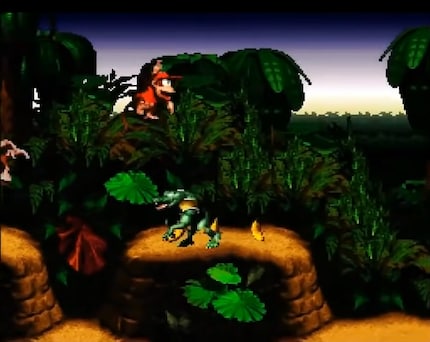
In «Donkey Kong Country», DK is supported by the little monkey Diddy. The two must master challenging levels in which numerous secrets are hidden - including mounts such as the rhinoceros Rambi.
The formula works so well that two sequels are released. Rareware continues to refine and improve the gameplay. The greatest variety is provided by the changing main roles, which are always taken on by new primates.
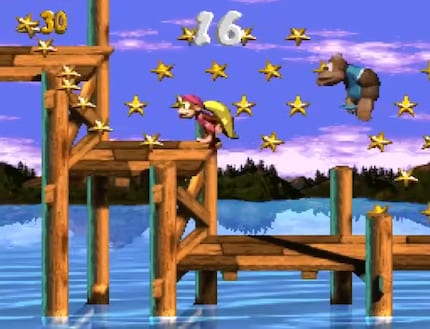
The third instalment concludes the «Country» series and suffers from its late release, taking place several months after the launch of Nintendo's next home console, the N64. The next Rareware game has better timing. «Donkey Kong 64» is released in the middle of the Nintendo 64's life cycle and puts DK in a three-dimensional environment for the first time.
The 3D platformer for the N64 has five playable characters with their own weapons and abilities. There are also several large levels bursting with collectables. To this day, «Donkey Kong 64» holds the world record for the 3D platformer with the most collectable items. There are a total of 3,821 objects.
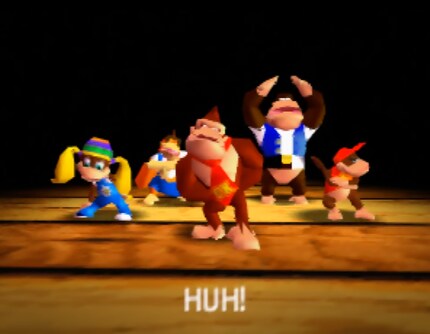
Also appearing on the N64 is «Diddy Kong Racing». DK doesn't play a role there, but his little companion Diddy does. Together with other animal racers, he is the star of a fun racer that represents serious competition for «Mario Kart 64» in the 1990s.
Rightly so, because apart from three different vehicle types with karts, hovercrafts and aeroplanes, «Diddy Kong Racing» gives exploration an important role. If I take the time to leave the racetracks and take a closer look at them, I discover hidden keys, among other things, with which I can unlock secret levels. The game almost got a sequel starring DK - if Rareware hadn't been bought by Microsoft in 2002 (see below).
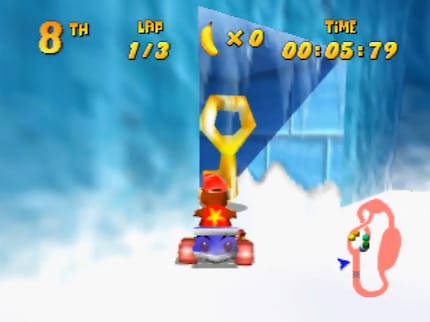
Games: «Donkey Kong» (1994), «Donkey Kong Land» (1995), «Donkey Kong Land 2» (1996), «Donkey Kong Land» (1997)
«Donkey Kong» fans have a good time on the Game Boy. At first glance, the first DK game for the handheld looks like an adaptation of the arcade version. After the first four levels, however, it becomes clear that there is much more to the small cartridge. There are a total of 96 further levels in the game, which add puzzle and skill passages to the classic platform gameplay, similar to the later «Mario vs. Donkey Kong».
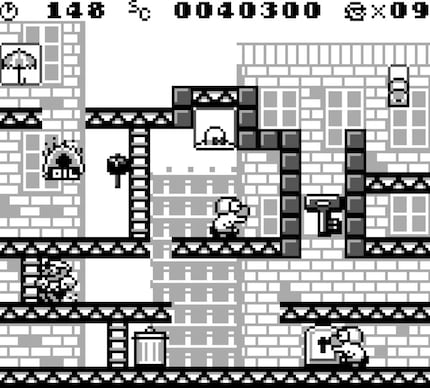
The «Donkey Kong Land» trilogy on the Game Boy follows a similar path. What at first glance looks like a simplified version of the «Donkey Kong Country» trilogy are brand new games. Rareware has given the «Land» games their own levels and worlds, which make up for the steamed-up look.
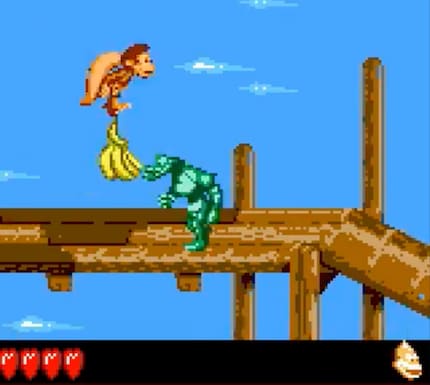
Games: «Donkey Konga» (2003), «Donkey Konga 2» (2004), «Donkey Kong Jungle Beat» (2004), «Donkey Konga 3» (2005, only in Japan), «Donkey Kong Jet Race» (2007)
The close collaboration between Nintendo and Rareware ends three years after the release of «Donkey Kong 64» in 2002. The studio is bought by Microsoft and Nintendo needs new developers for their favourite gorilla. The «Donkey Konga» trilogy on the GameCube is created in collaboration with Namco.
«Donkey Konga» is a rhythm game and differs from the previous games with DK. It focuses primarily on the musical aspect of the series. To play it, I need the dedicated DK bongos controller. I have to drum on the left, right or both bongos at the right moment. A built-in microphone recognises my clapping.
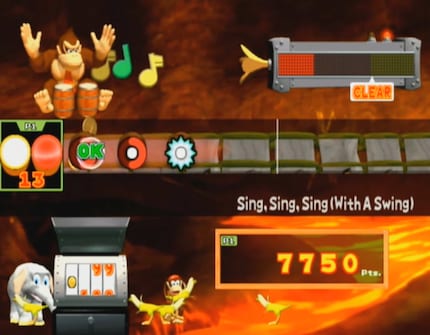
The two successors change little about the concept of «Donkey Konga». They add new tracks and improve the graphics within the same console generation.
For me, the DK Bongos are one of the most unnecessary Nintendo gadgets. On the one hand, because your hands hurt after a few minutes of drumming. On the other hand, because the bongos are only used in one other game besides the «Donkey Konga» trilogy: «Donkey Kong Jungle Beat» for the GameCube.
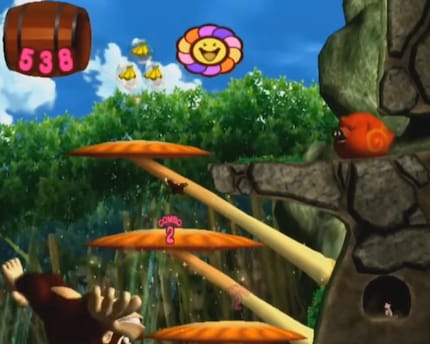
At first glance, «Donkey Kong Jungle Beat» looks like a classic side-scroller. In fact, the 2.5D platformer is designed to be controlled with the DK bongos. By hitting the left or right drum, I move DK in one direction. If I hit both drums, the gorilla jumps. A clap triggers a shockwave. If you're not familiar with the unusual controls, you can use the GameCube controller as an alternative.
Of the experimental games, «Jungle Beat» is the most popular. This could be partly due to the fact that Nintendo itself is behind the special platform game.
Another game being developed with the DK Bongos in mind is «Donkey Kong Jet Race». This time, another studio is behind it with Peon. However, development is protracted and is postponed to the next console, the Nintendo Wii. The DK bongos are replaced by the Wii remote control and the nunchuk.
«Donkey Kong Jet Race» is a fun racer à la «Mario Kart», which unfortunately can't match the fun factor of its role model. The title is criticised for being boring, slow and superficial. Fans even mourn the replacement of the DK Bongo controls. «Donkey Kong Jet Race» is the worst-rated «Donkey Kong» game on Metacritic.
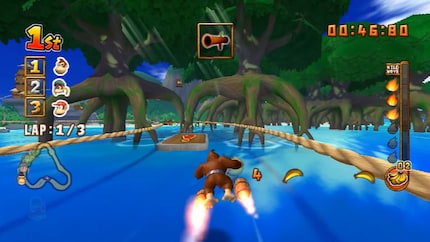
Games: «DK: King of Swing» (2005), «Donkey Kong: Jungle Climber» (2007)
In addition to «Donkey Kong Jet Race», Studio Paon developed two more games for Nintendo, «DK: King of Swing» and «Donkey Kong: Jungle Climber», but this time for handhelds. Although they didn't flop as badly as the racing game, they didn't get dream ratings either.
«DK: King of Swing» and «Donkey Kong: Jungle Climber» are puzzle games based on their special controls. I use the shoulder buttons on the Game Boy Advance or Nintendo DS to swing DK and Diddy up the levels. Although this is something different, it limits the level design to this one gimmick. The air is quickly gone.
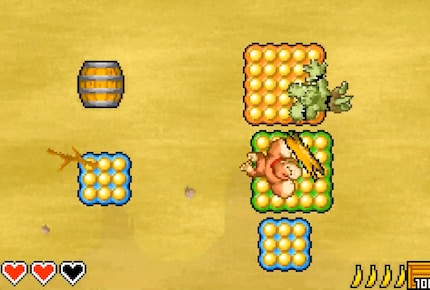
Games: «Donkey Kong Country Returns» (2010), «Donkey Kong Country: Tropical Freeze» (2014), «Donkey Kong Bananza» (2025)
After more or less successful attempts with other development studios, Nintendo decides to produce the next «Donkey Kong» game in-house. Retro Studios, which is responsible for a masterpiece with its first work «Metroid Prime», is entrusted with the task.
The resulting game is one of my favourite platformers. «Donkey Kong Country Returns» returns to the roots of the popular SNES series. At the same time, the crunchy gameplay of the original is served up a little more digestible for a younger audience, for example by adding a new life bar. With this, DK and Diddy can take up to four hits instead of two.
In between crisp platforming passages, I always have time to search the fancy levels for secrets and collectibles to unlock hidden challenges. This year saw the release of the best version of the game to date on the Nintendo Switch, which eliminates the tedious controls with the Wii remote. You can read my review of the successful remaster here:
«Donkey Kong Country: Tropical Freeze» is the direct sequel. The game's sales figures suffered from the original release for the flopped Wii U. However, shortly after the release of the Switch, a version was released for the hybrid successor console, which sold better.
This allowed the game to reach a larger audience - and rightly so, as Retro Studios was able to build on the knowledge gained from the development of the first game in «Tropical Freeze». This results in even more creative levels.
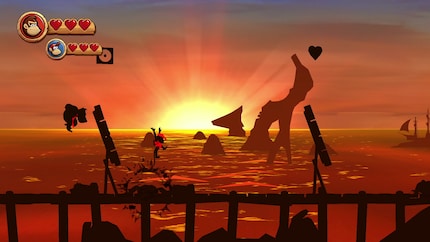
After «Tropical Freeze», Nintendo's most famous gorilla went quiet for a long time, only making guest appearances in various «Super Mario» spin-offs. At least until «Bananza», the second 3D platformer starring DK, was released 26 years after «Donkey Kong 64». In this one, the gorilla destroys entire levels with his fists and transforms into different animals with superpowers.
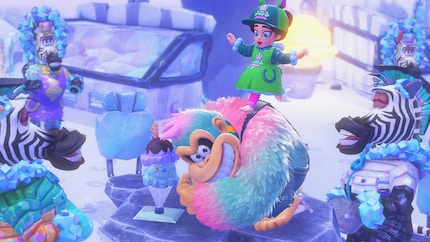
I was also allowed to test this title. Spoiler: «Donkey Kong Bananza» completely blew me away and I already see it as a candidate for the best game of 2025. You can read the detailed reasons for this in my test:
The history of «Donkey Kong» contains numerous high and low points. Above all, the franchise stands for jumping and collecting action at the highest level. The revival of the «Country» series and the new «Bananza» set out on an exciting path that makes me curious about the future of «Donkey Kong».
DK's role in the «Super Mario» movie, the «Donkey Kong» area at Universal Studios Japan's Super Nintendo World theme park and, last but not least, «Donkey Kong Bananza» prove that Nintendo hasn't forgotten its favourite gorilla. So the monkey theatre is likely to continue for quite some time - thankfully.
I wrote my first text about video games when I was eight years old. I haven't been able to stop since. The rest of my time is spent on my love for 2D husbandos, monsters, my cats and sport.
Interesting facts about products, behind-the-scenes looks at manufacturers and deep-dives on interesting people.
Show all
Background information
by Domagoj Belancic

Background information
by Domagoj Belancic

Background information
by Domagoj Belancic